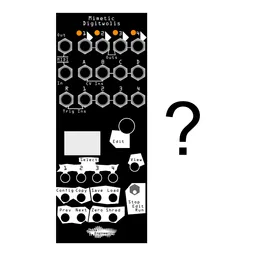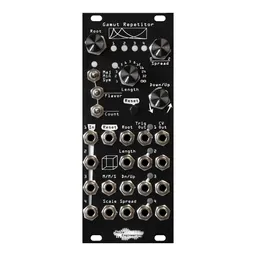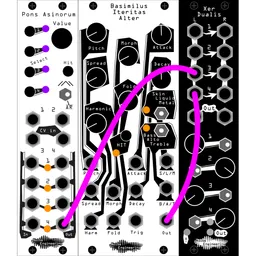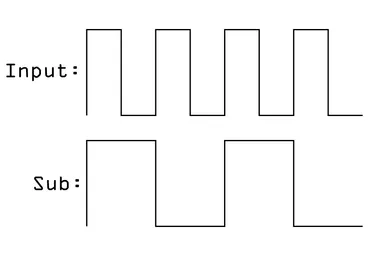Welcome back to everyone’s (well, my) favorite series, Using Stuff Wrong! Today, we’re taking a quick look at Mimetic Digitalis once again. Why? Because there’s so freakin’ much you can do with this thing, and it’s one of my favorite modules to use in weird ways. Let’s go!
Mimetic Digitalis as a quantizer
This is a concept that, as far as I can tell, started with the Buchla 248 MARF. The technique is simple, and can be implemented with any CV-adressed CV sequencer (that’s a mouthful), so try it out with other stuff in your system, too!
To start, we need to program in the notes we want to use on separate steps. Generally speaking, you’d have the lower notes on lower steps and higher notes on higher steps so it behaves more like a normal quantizer. However, that’s the fun thing about this: we can do whatever we want. Get creative. Maybe you want increasing voltage to decrease your scale? Why not.
I decided to keep it simple and program in a couple octaves of a blues scale, with some extra notes thrown in for even more flare.
Next, we need to send a CV source to the CV-N input. In the patch below, I’m using the Clep Diaz’s unipolar output patched to MD’s CV-N input. Modulating that input shifts MD around and it outputs the notes we programmed, just like a quantizer.
I’ve sent CD a relatively fast clock, and we’re off. Every time it changes step, it triggers our voice. Instant. Jazz. Sort of.
Now, the CV-N jack is a 0-5v CV input, so you’ll need a pretty large CV source to start out with. This is great for use with unquantized random CV generators like ribbon controllers, or Clep Diaz, or even something simple like a fader from Lapsus Os. And if you attenuate the input signal, you can limit it to 12 steps, or 8, or whatever number works for what you’re doing.
Learn more:
Mimetic Digitalis for Threshold Signals
Sometimes, it’s useful to know when a voltage gets above a certain threshold. This is one of those things that’s a relatively rare occurrence, but when you need to do it, it’s kind of a PITA. A simple example: maybe I have a single pitch sequence and I want the lower octaves to be played by one voice and the higher octaves to be played by another. We could use a threshold to control a switch that changes what voice we trigger, depending on how high the pitch sequence is.
How can we generate that threshold signal? It’s easy to patch up with MD: patch your CV into the CV-N input on MD once again. Figure out what steps correspond to your target threshold, then set those high as they’ll go. For instance, if I want to create a high gate when my signal goes above (roughly) 2 volts, I’d set steps 8-16 high, and the rest low. Easy!
Mimetic Digitalis as a burst generator
This last one is a personal favorite, as I don’t know of many modules that can do this sort of thing.
In a patch a couple of weeks ago, I wanted to create a quick burst of triggers that slowed down as they went. But I didn’t have a dedicated burst generator handy...so how could I do this? The solution: Mimetic Digitalis. MD sends out a trigger every time it changes to a new step. I realized that I could easily create my weird bursts by sending an exponential envelope into the CV-N input. Attenuating the envelope changes the number of triggers, changing the length of the envelope changes the length of the burst (obviously), and changing the curve changes the spacing of the bursts and their relative speed. The extra cool thing about this is that you can also create CV bursts. I randomized all four tracks and got some really cool CVs out that changed as the burst, well, burst.
Check it out. I have a simple trigger sequence going to Branches, and every once in a while I’ll randomly get a trigger/CV burst from MD, triggering and modulating my complex voice, created with Cs-L and Natural Gate.
Use stuff wrong! It’s fun. And if you find a cool way to use one of our modules wrong, let us know! Send an email, or tag us in an instagram post.






